The impact of humans has had a significant impact on our environment over the course of many years, and as a result, several animals have become extinct as a direct result of this.
Irish Elk (5,200 BC)

Megaloceros giganteus
At the conclusion of the most recent glacial epoch, Irish Elk occupied a significant portion of northern Europe, ranging from Ireland to Siberia. They were known as Megaloceros giganteus. ‘Giant deer’ is a more accurate name for these animals because they share very few characteristics with the elk species that are still alive today. At the shoulder, they might reach a height of up to seven feet and weigh up to seven hundred kilograms. The width of their antlers reached a staggering 12 feet, making them the largest of any single species of deer. Because males would have utilized the large antlers to frighten rivals and impress females, it is likely that the antlers evolved as a result of sexual selection.
It is estimated that the Irish Elk went extinct roughly 5,000 years ago, having evolved approximately 400,000 years ago. There is a high probability that human hunting was a contributing factor in their extinction. The melting of the ice, on the other hand, would have made it possible for a variety of plants to bloom, which would have resulted in a deficiency of minerals in the diet. It was especially important for the animal to have a sufficient quantity of calcium in order for its huge antlers to grow.
Quagga (1883)
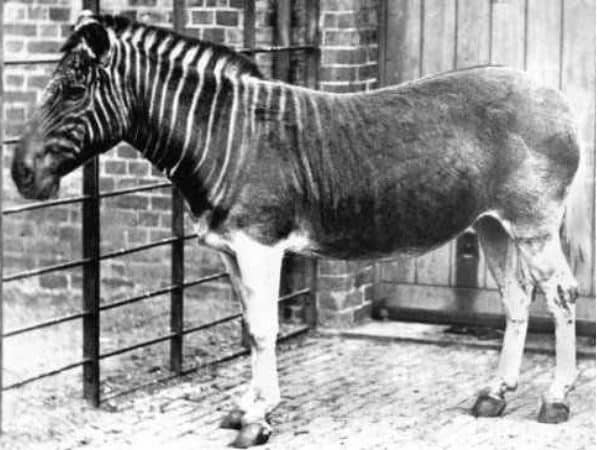
This fascinating creature, which is half zebra and half horse, is actually a subspecies of the zebra that diverged approximately 200,000 years ago and went extinct in the 19th century. Equus quagga quagga is the scientific name for this animal. Onomatopoeic in nature, the Quagga people were originally from South Africa and earned their name from the sound that they produce. 1883 was the year that it was hunted to extinction in order to conserve the area for agricultural animals, as well as for the flesh and hides of such animals.
Japanese Honshu Wolf (1905)
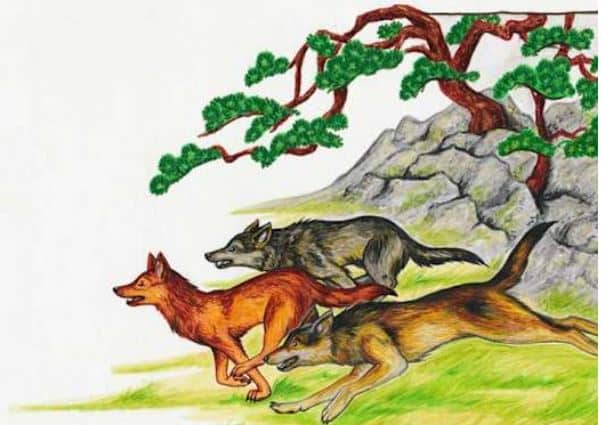
It was the Japanese islands of Shikoku, Kyushu, and Honshu that were home to the Canis lupus hodophilax, also known as the Honshu wolf. It was the smallest species of wolf that belonged to the canis lupus family, eventually reaching a length of approximately three feet and a shoulder length of twelve inches. As a result of the introduction of rabies to the population of Honshu wolves in 1732 (either intentionally or through domesticated dogs), the disease resulted in the death of a significant number of animals and caused them to become more hostile toward people. As a result of their greater contact with humans as a result of the deforestation of their native environment, they became more aggressive, which led to their being excessively hunted until they became extinct in 1905.
Great Auk (1852)
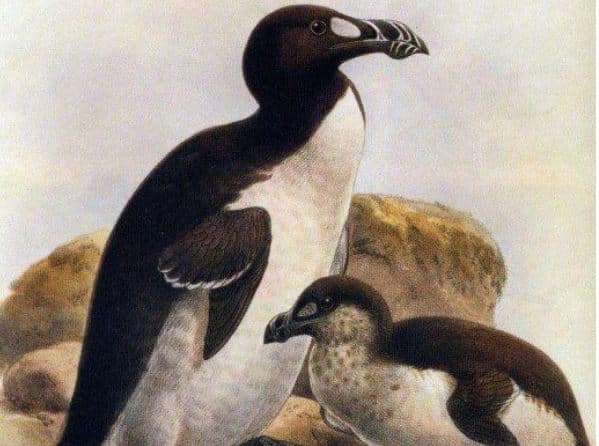
The Pinguinus impennis, also known as the Great Auk, was a bird that lacks the ability to fly and resembles a modern-day penguin. On the other hand, in contrast to the penguin, it possessed a large hooked beak, a robust swimming ability, the ability to store fat for warmth, the ability to nest in dense colonies, and the ability to mate for life. Although it existed in the north Atlantic ocean until its extinction in the 19th century, it could reach a height of almost three feet and lived there until its demise. Europeans began hunting the Great Auk in the 16th century in order to obtain the down feathers of this cherished bird for use in the production of pillows. Later on, the bird was hunted in North America for the purpose of providing bait for fishing. It was sometimes subjected to horrors such as being skinned and burned alive for the purpose of obtaining feathers and food. As the Great Auk grew increasingly scarce, museums and collectors developed a strong desire to acquire their very own specimens, which ultimately led to the species’ demise.
Pinta Island Tortoise (2012)
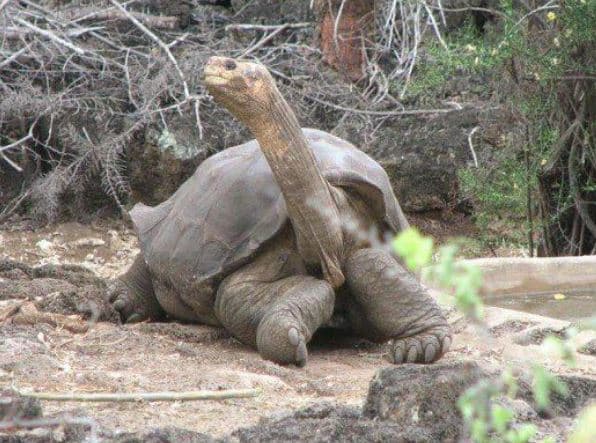
The Pinta Island tortoise, also known as Chelonoidis nigra abingdonii, was a subspecies of the giant tortoise that was native to the Galapagos Islands. In the 19th century, it was killed extensively for food, and in the 1950s, goats were brought to the island, which resulted in the destruction of its natural habitat. The animal was saved by a number of different efforts, but by 1971, there was only one of them left: the well-known Lonesome George. There were numerous attempts made to pair George with other tortoises; however, none of the eggs hatched, and George passed away in 2012, making him the last of his kind.
Steller’s Sea Cow (1768)
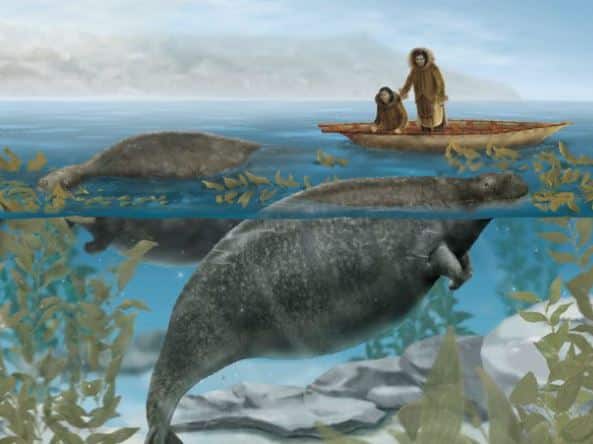
Steller’s marine Cow, also known as Hydrodamalis gigas, was a massive marine mammal that consumed plants and had an appearance that was related to that of the manatee. However, it has the potential to reach a length of up to 30 feet (9 meters). Georg Wilhelm Steller was the one who made the discovery, and within thirty years, Europeans had pursued it to the point of extinction through hunting. This could be attributed to the fact that it was completely subdued and that it lived in shallow waters, where it would eat on reeds. It resided in coastal sections of the north Pacific ocean and went extinct in 1768 as a result of being hunted for food, fat for oil lamps, and skin to line boats. Its habitat was the northwest Pacific Ocean. In order to locate the animal, these sailors and hunters followed the path that Steller had taken.
Smilodon (10,000 BC)
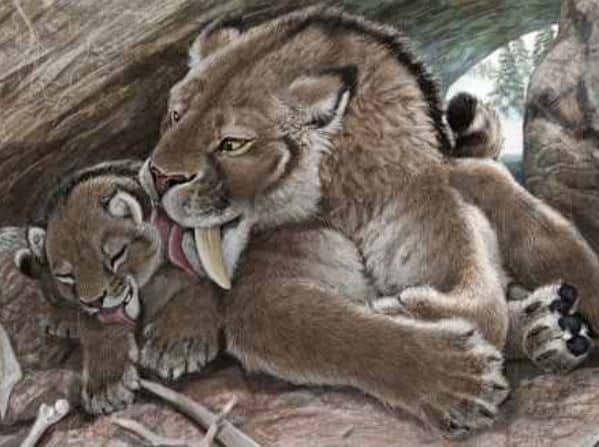
The Smilodon, sometimes known as the Saber-toothed Cat, was a species of cat that existed in both North and South America at the end of the most recent glacial period. However, it took approximately 2.5 million years to evolve into its own distinct species. The largest subspecies, known as Smilodon populator, had the potential to weigh up to 400 kilograms, measure three meters in length, and stand at a shoulder height of 1.4 meters. In spite of the fact that it was referred to as a saber-toothed tiger, its physique was more consistent with that of a bear. It had short, robust limbs that were not intended for speed. The prominent canines of this animal could grow to a length of thirty centimeters (one foot), but they were very brittle and were primarily employed for biting into soft neck tissue after the prey had been subdued. Although it possessed a rather weak bite, it was able to open its jaws to a degree of 120 degrees.
The Smilodon was a sociable mammal that focused mostly on hunting larger prey such as bison, deer, and tiny mammoths. However, it was also a scavenger, which suggests that it was a gregarious animal. This may have been a contributing factor in its death because it would have had a more difficult time capturing smaller and more agile prey. The extinction of the Smilodon, on the other hand, seems to coincide with the entrance of humans, who were known to have hunted a great number of native animals.
Woolly Mammoth (2,000 BC)
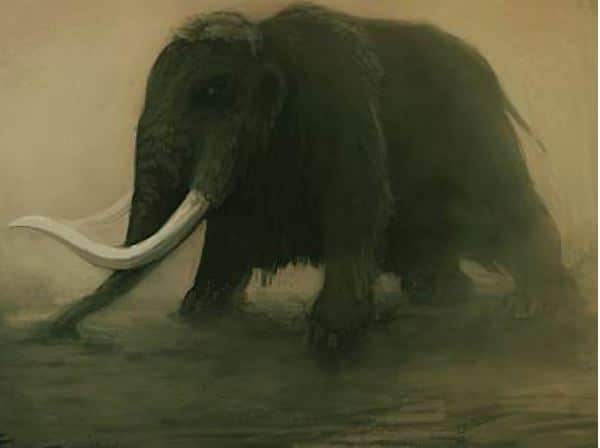
It was during the early Holocene period that the Woolly Mammoth, also known as Mammuthus primigenius, roamed a significant portion of the arctic tundra regions that are located in the northern hemisphere. It is estimated that these enormous creatures could grow to a height of 11 feet and weigh 6 tons, which is roughly equivalent to the weight of African elephants. However, the Asian elephant is their nearest relative. This animal, in contrast to the elephant, had fur that was brown, black, and ginger in color. In order to reduce the risk of frostbite, it also had a shorter tail.
There was a high demand among people for the long tusks that the Woolly Mammoth possessed, which were used for both fighting and foraging. Despite the fact that they were also hunted for food, it is highly probable that climatic change at the conclusion of the most recent glacial period was the primary factor that hasaccelerated their extermination. The majority of their habitat vanished as a result of the melting ice, which resulted in a population reduction that was sufficient for humans to eradicate them through hunting. Small populations continued to exist in remote regions up until 4,000 years ago, despite the fact that the majority of them had died some 10,000 years ago.
Moa (1400)
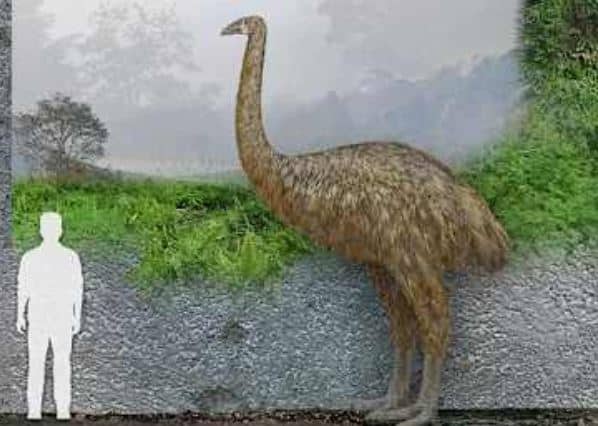
The moa was a large species of flightless bird that was unique to New Zealand. It belonged to the Dinornithiformes family. They had the potential to reach a height of nearly 4 meters (12 feet) and a weight of 230 kilograms. Despite the fact that they were quite tall, the vertebrae of the bird indicate that they spent a significant portion of their time with their necks pointing forward. It is believed that these lengthy necks were capable of producing low-pitched, sonorous voice calls. The Haast’s eagle was the customary method of hunting moa; however, this practice shifted when the Múori people arrived in the region around 1300 A.D. Over the course of a little over a century, people were responsible for driving them to extinction through killing, which in turn led to the extinction of the dependable Haast’s eagle.
Tasmanian Tiger (1836)
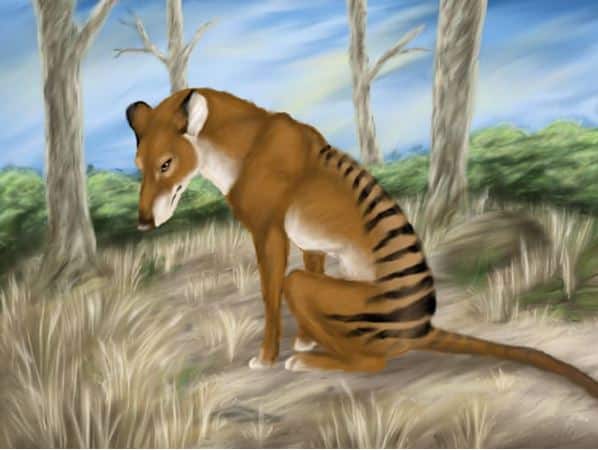
The Tasmanian tiger, also known as the thylacine, was the largest carnivorous marsupial of the modern era. Its evolution occurred approximately 4 million years previously. In the 1930s, it became extinct as a result of farmers’ excessive hunting, who considered it to be responsible for the deaths of sheep and poultry. The introduction of dogs, the destruction of habitat due to agriculture, and the spread of disease were also contributing factors. This extraordinary species could reach a length of about two meters from head to tail and lived in Tasmania, Australia, and New Guinea. Its length could reach almost two meters.
During the night, the Tasmanian tiger would ambush its prey, which included kangaroos, wallabies, possums, birds, and small mammals. Atop the food chain, the Tasmanian tiger was the most dangerous predator. As a result of its jaws being able to open to a 120-degree angle and its stomach being able to expand in order to ingest vast quantities of food, it was able to thrive in areas with a low population density. OMG, this is terrible. My own favorite item on this list was also one of them.


0 Comments